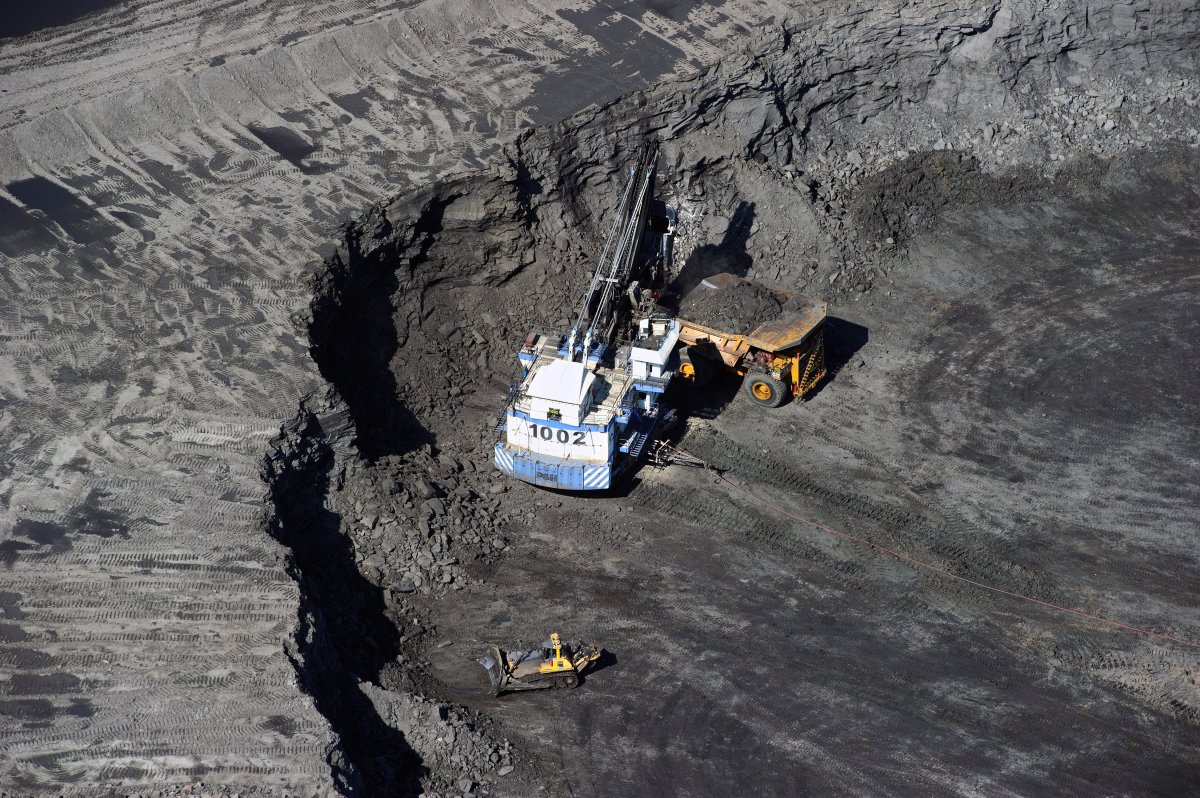Canadian Natural Resources Ltd. is cutting its 2019 capital budget by about $1 billion due to poor western Canadian oil prices but it says it will ramp up spending if prices rebound.

READ MORE: Shares in Cenovus, CNRL soar on news of Alberta crude production cuts
The Calgary-based oilsands producer announced Wednesday a 2019 base budget of $3.7 billion, below its “normalized” range of $4.7 billion to $5 billion and about 20 per cent less than this year’s $4.6 billion.
“Our capital program is very flexible and we can curtail capital spending down to the $3.1 billion range and still keep production flat,” said president Tim McKay during a webcast from the company’s investor day in Toronto following the announcement.
“Should prices improve and stabilize, and we see clarity on market access, we would look to increase our capital to approximately $4.4 billion.”
Analysts praised the budget for its restraint in the current oil price environment and Canadian Natural shares rose by about 4.5 per cent in early afternoon trading on the Toronto Stock Exchange.
CNRL 2019 budget breakdown
The 2019 budget contains $600 million for long-term growth projects, including the completion of the 40,000-barrel-per-day steam-driven Kirby North oilsands project (expected to deliver first oil in late 2019) and building additional multi-well pads at Canadian Natural’s Primrose thermal heavy oil project in northern Alberta.
CNRL says production in 2019 is targeted to be between 1.03 million and 1.12 million barrels of oil equivalent per day, with a product mix of about 76 per cent oil and natural gas liquids and 24 per cent dry natural gas.
Canadian Natural says a curtailment program announced by the Alberta government last weekend designed to remove 325,000 barrels per day of oil from the province’s over-taxed pipelines has already resulted in stronger forward crude prices in January.
Watching pipeline progress

Get weekly money news
A glut of oil in Alberta as pipeline capacity fails to match production increases is blamed for dramatically lower local oil prices since last fall.
READ MORE: Notley and cabinet set legal wheels in motion to begin cutting oil production
It says it will monitor those prices and the progress of the stalled Keystone XL and Trans Mountain expansion export pipelines with the option to increase its spending by about $700 million next year if signals warrant.
The proposed Keystone XL pipeline, which would bring crude oil from Hardisty, Alta., to markets in the U.S. Gulf Coast and Midwest, is years behind schedule after it was denied by the Obama administration. It received new life in spring 2017 when Donald Trump gave it a presidential permit.
READ MORE: Pipeline problems, not carbon taxes, the bigger factor in energy competitiveness
The Trans Mountain pipeline expansion, which would triple capacity to move oil to the west coast, was approved two years ago, but is now in legal limbo as Ottawa revisits the impacts on First Nations and B.C.’s marine environment.
READ MORE: Who are the winners and losers from the Alberta oil production cut?
Alberta oil prices explained
Each type of oil around the world has its own price and in recent months, the price of Alberta crude has tanked. New-York-traded West Texas Intermediate (WTI) is the benchmark price for light crude oil in North America. Western Canadian Select (WCS) is the reference price for heavy crude oil from the oilsands.
The discount between Alberta’s WCS and the benchmark WTI was about US$25 per barrel on Tuesday. Alberta Premier Rachel Notley says a lack of pipeline capacity is a big part of the problem, and the price differential is costing Canada $80 million per day.
Notley said Prime Minister Justin Trudeau’s government must do its part by rolling back proposed legislation that she says will make it much harder for energy megaprojects to be approved.
CNRL looking at driverless big trucks
Technology and options to increase future oil production took centre stage at the investor day, with Scott Stauth, chief operating officer for oilsands, fleshing out Canadian Natural’s plan revealed last spring to test driverless oilsands mining trucks.
The autonomous haulers are already in place at rival Suncor Energy Inc.’s mines and Imperial Oil Ltd. said recently it plans to experiment with up to seven of the trucks at its Kearl mine.
Canadian Natural plans to spend about $75 million on a field trial at its Jackpine Mine in late 2020, Stauth said.
“Assuming we are satisfied with the results of the three-truck trial at Jackpine, we would convert all trucks at Jackpine to autonomous by 2022, followed by Muskeg River Mine and Horizon in 2025,” said Stauth.
“With an incremental capital cost of $275 million to $325 million, we target our operating costs to be reduced by 30 to 50 cents per barrel once complete.”
Canadian Natural has 18 trucks at Jackpine and a total of about 140 at all three mines.
The company is encouraged by results from its 500-tonne-per-hour pilot project to separate bitumen from sand in the mining pit using a portable processing unit, rather than transporting it to a central processing facility, and plans to continue to test it in 2019 before building a larger commercial-sized plant in 2020, Stauth said.
The technology could reduce mining costs by $2 to $3 per barrel, cut greenhouse gas emissions “significantly” through less trucking, and reduce the need for tailings ponds, he said.
Stauth said new phases at the company’s Horizon oilsands mining and upgrading facility and the proposed Pierre River oilsands project could add 510,000 bpd of synthetic oil production but would only be considered if market access issues are solved.
— With files from Karen Bartko, Global News








Comments